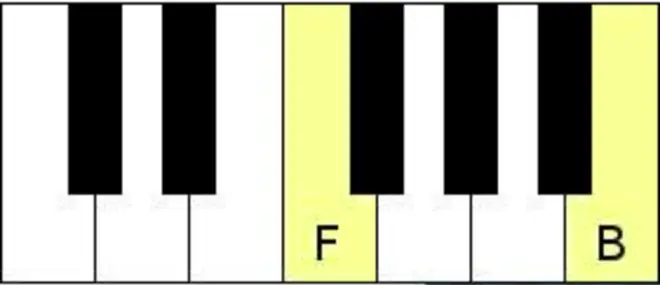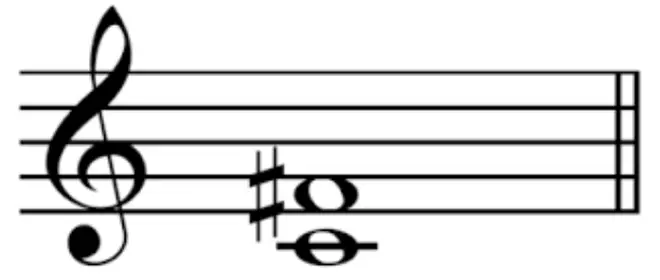On Air Now
Calm Classics with Ritula Shah 10pm - 1am
18 June 2018, 16:19 | Updated: 8 October 2023, 12:26

There’s an interval so dissonant that it’s earned the nickname ‘The Devil’s Interval’ and was avoided for centuries by composers and the pupils they taught.

Meet the tritone, and hear the story of the interval’s characteristics, history and dark associations.
A tritone is an interval made up of three tones, or six semitones. In each diatonic scale (or the most basic scale of a key) there is only one tritone, and it occurs between the fourth and seventh degrees of the scale, so in a C major scale this would be between F and B. Or in G major it would be between C and F sharp:

Before the invention of keyboard instruments there was no ‘universal tuning’ and instruments were tuned in lots of different ways. The tritone actually played a vital role in the development of modern harmony...
An interesting part of this story is that not all accidentals were created at the same time – F-sharp and B-flat were the first ones, and they were invented to try and solve the problem of the tritone in music. Sound interesting? Read on...
In times past, music was organised into modes rather than keys. The modes only used the white keys on a keyboard, so the only way you could play a different scale, or a different pattern of tones and semitones, was to start on a different note.
Read more: Musical modes – what are they and how do we use them?
Each mode had its own recognisable flavour and character. There was an accepted tradition of which modes were suitable for joyful music (e.g. Ionian and Lydian) and which were for more mournful subjects, (e.g. Dorian and Phrygian).
The system of modes worked for every note of the scale... until you got to B. This scale was called the Locrian mode, and it was the only one where the fifth degree of the scale is not a perfect fifth – it’s an augmented fourth – or that forbidden tritone!
At times when music was holy, harmonious and ordered, this dissonant interval went against everything it appeared to stand for. It was christened diabolus in musica – the Devil in music and the Locrian mode was very rarely used.
Composers who wanted to use this last mode began to tamper with the devilish B to F interval to try and improve the scale. Some composers flattened the B until it was a perfect fifth below the F, and others sharpened the F until it was a perfect fifth above the B, giving us our first two accidentals – B flat and F sharp.
John Sloboda, a professor of music psychology at the Guildhall School of Music and Drama, explained that the tritone is particularly unnerving because the human brain is hardwired to find harmony and symmetry in music:
“When we hear something dissonant, it gives you a little bit of an emotional frisson, because it's strange and unexpected. The emotional result of hearing a tritone, might not be too different from the one experienced at the bottom of a staircase that failed to mention it’s missing its last step.”
Pitches sound harmonious together when there is a simple ratio between the frequencies of the two notes. The ratio of two notes an octave apart is a pleasing 2:1, and these sounds are so consonant we even give both the notes the same name. The next most consonant interval is the perfect fifth, (3:2). And so it continues, through the full range of intervals.
So how about our friend the tritone? Well, its notes end up in the unsightly proportion of 45:32 (or 64:45 depending on which way you tune it). Either way, this ratio sounds pretty ugly to the human ear.
But it’s not all bad news – the tritone has found great fame and fortune in the world of alarms and emergency sirens!
Rumours abound that music featuring the tritone was banned from churches because of its association with the devil. But as juicy as this gossip about the tritone might be, there is no evidence that this ever happened.
It’s more likely that the strict rules of harmony observed by those composing for the church forbade the use of the augmented fourth for musical reasons, rather than because they believed that it was the devil dwelling in music.
The jarring nature of the tritone makes for instantly recognisable hooks in hit songs and catchy theme tunes. Here are a couple of our favourites:
Maria from Leonard Bernstein's West Side Story

West Side Story-Maria
Jimi Hendrix's Purple Haze

Jimi Hendrix Purple Haze